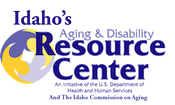Filter your results
Results 1 - 10 of 19. To narrow results enter search keywords or select filters.
Consumer fraud is a serious problem in Idaho, but, fortunately, it is often a preventable problem. As a consumer, you can protect yourself from fraud by understanding your rights and by making informed and intelligent decisions. There are a variety of steps you can take to protect your credit.
In 1977, the Idaho Legislature passed a law which gives tenants a simple and quick method of forcing landlords to return security deposits that are owed to tenants...
Housing built before 1978 may contain lead-based paint. Lead from paint, paint chips, and dust can pose
health hazards if not managed properly. Lead exposure is especially harmful to young children and pregnant women. Before renting pre-1978 housing, lessors must disclose the presence of known lead-based paint and/or lead-based paint hazards in the dwelling. Lessees must also receive a federally approved pamphlet on lead poisoning prevention.
Simple Steps To Protect Your Family From Lead Hazards.
En 1977, la Legislatura de Idaho pasó una ley cual le da a inquilinos una manera sencilla y rápida de forzar a los dueños a regresar los depósitos de seguridad que se les debe a los inquilinos...
Credit and charge card fraud costs cardholders and issuers hundreds of millions of dollars each year. While theft is the most obvious form of fraud, it can occur in other ways. For example, someone may use your card number without your knowledge. It’s not always possible to prevent credit or charge card fraud from happening. But there are a few steps you can take to make it more difficult for a crook to capture your card or card numbers and minimize the possibility...
To heighten awareness about lead poisoning prevention, the U.S. Environmental Protection Agency (EPA) has developed Lead in Your Home: A Parent's Reference Guide. The Agency believes this is an essential resource for anyonefrom owners to tenantsconcerned about the dangers of lead in their home and environment. This Guidebook provides Agency recommendations on how you can reduce your familys risk of lead exposure and prevent lead poisoning, ranging from simple steps you can do now to more rigorous procedures that will permanently get rid of lead hazards in your home.
Do you renovate, repair or paint homes or child-occupied facilities built before 1978? If so, you need to know how to work safely with lead-based paint. This guide is designed to help plan for and complete a home renovation, repair or painting
project using lead safe work practices. Lead safe work practices are a group of techniques that reduce the amount of dust produced by renovation activities. When used correctly, they make the work area safer for workers and the home
safe for residents when renovation is complete.
This pamphlet is for you if you:
Reside in a home built before 1978.
Own or Operate a child care facility, including preschools and kindergarten classrooms, built before 1978, or
Have a child under six years of age who attends a child care facility built before 1978.
You will learn:
Did you know that many homes built before 1978 have lead-based paint? Lead from paint, chips, and dust can pose serious health hazards.
Read this entire brochure to learn:
How lead gets into the body
About health effects of lead
What you can do to protect your family
Where to go for more information
Pagination
Close
Filter your results
Type
Topics
Tags
Our Partners
LSC's support for this website is limited to those activities that are consistent with LSC restrictions.

